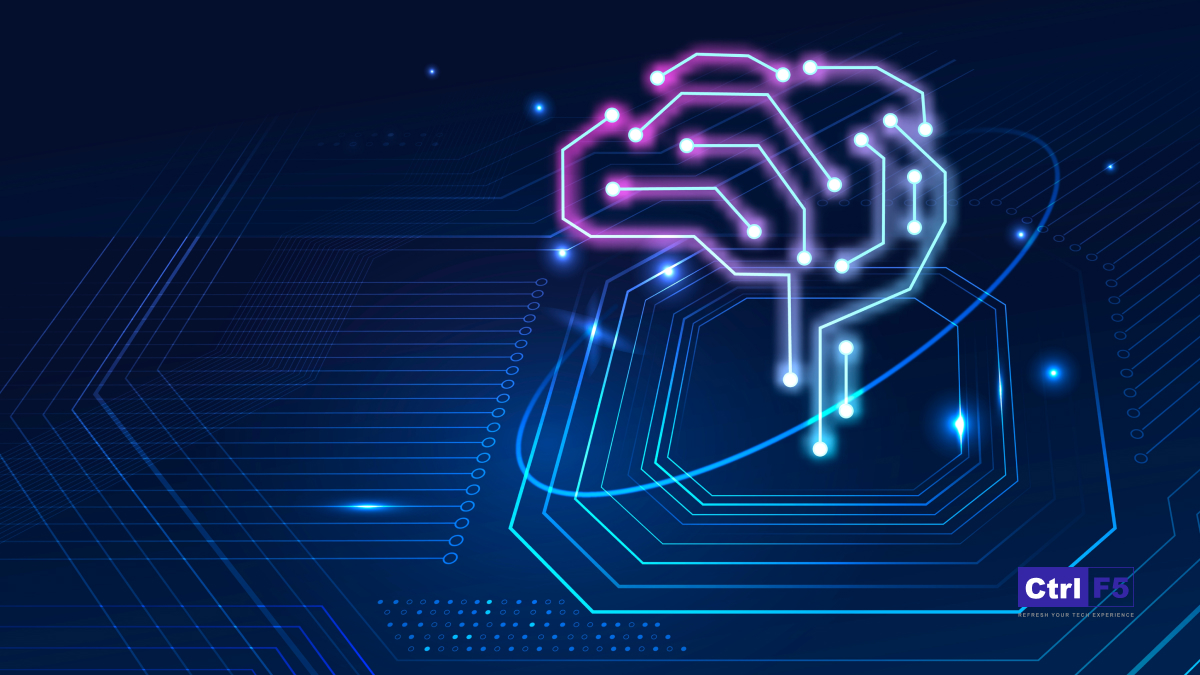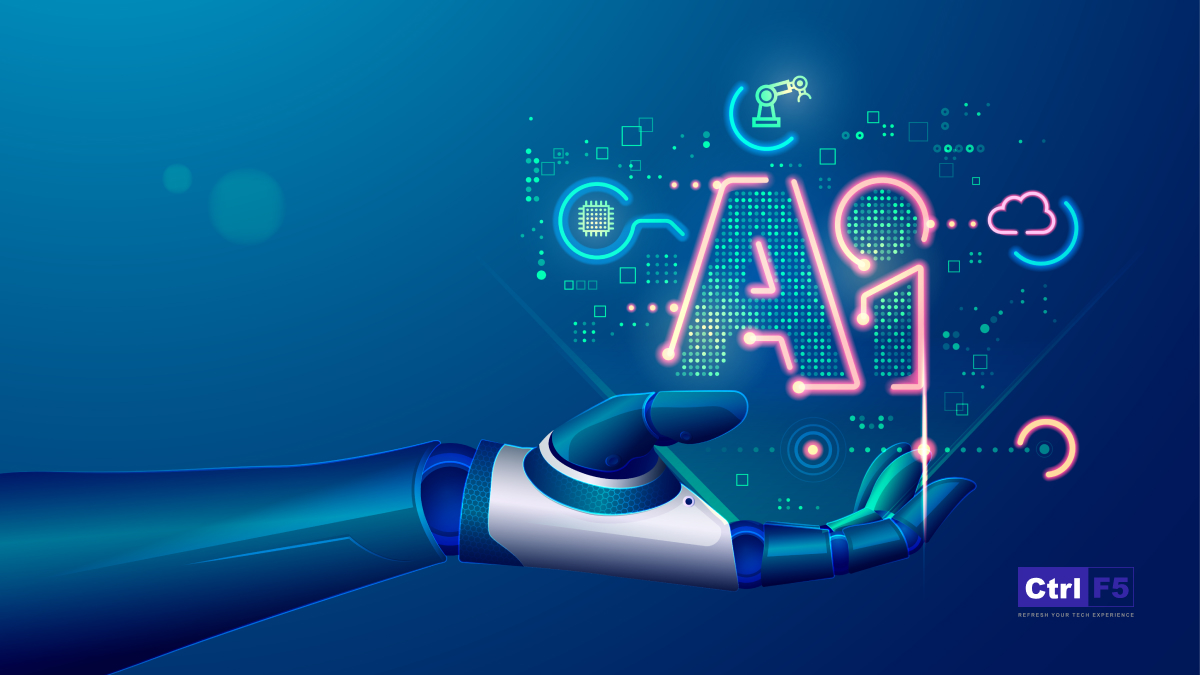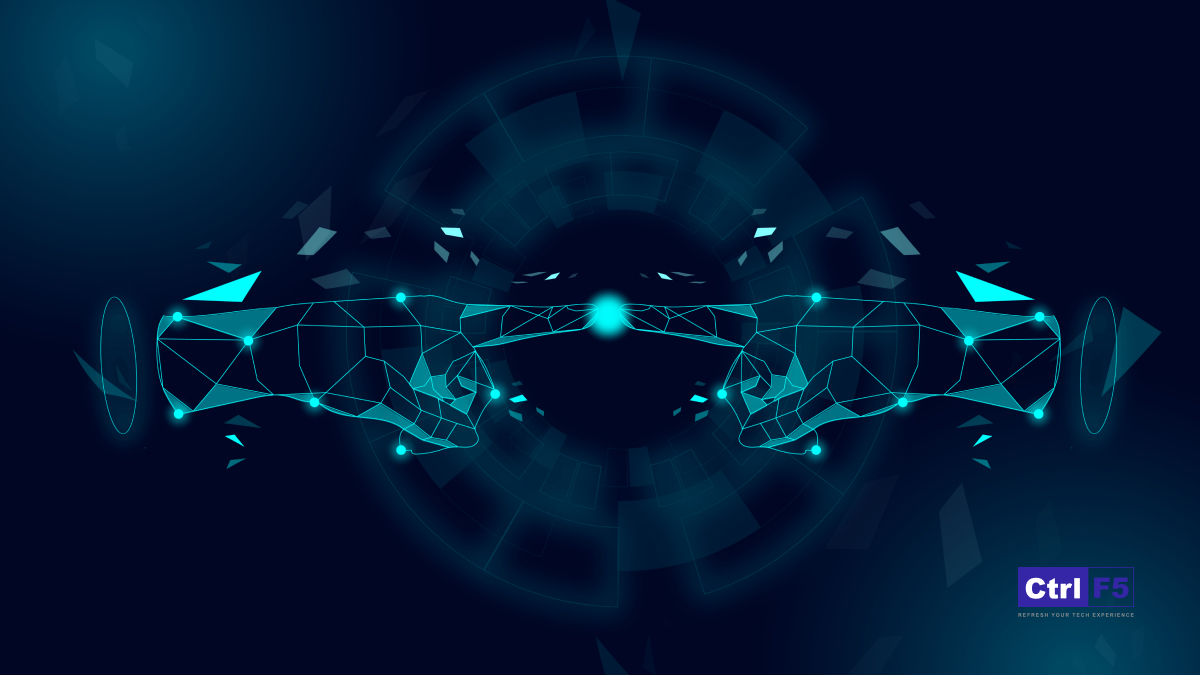How to Use RAG System Architecture in Your AI Application
- Anurag Pandey
- Last updated on May 28, 2025
- Artificial intelligence, ChatGPT, How To Guide
- 12 minutes read
Table of Contents
ToggleThe creation of Large Language Models (LLMs) was a major breakthrough for AI groups. With over 100 million users globally and over one billion monthly views, ChatGPT has become one of the most popular tools. Because LLMs are trained on vast quantities of data, they are able to identify patterns and relationships in language, which helps AI technologies produce more accurate and contextually relevant responses.
The speed and accuracy with which these technologies can produce a response is primarily responsible for the growth in encounters with AI. Improvements in AI and machine learning hardware’s processing power are primarily responsible for the speed of response. However, retrieval-augmented generation (RAG), an AI technique, is partly responsible for the accuracy gains. Generative AI technologies wouldn’t be any more practical than using a tool similar to a search engine if they weren’t fast enough. People wouldn’t trust those instruments to provide replies that were worthwhile paying attention to if they required accuracy and delicacy.
Artificial intelligence (AI) is advancing, and the Retrieval-Augmented Generation (RAG) system architecture is a leading example, especially when it comes to natural language processing (NLP) applications. It combines the greatest features of both worlds: the creative power of huge language models such as GPT (Generative Pre-trained Transformer) and the retrieval capabilities of dense vector search methods. By utilising a large amount of data, this collaboration enables AI systems to generate more accurate, contextually relevant responses.
RAG is a method that integrates an external data source with the powers of a huge language model that has already been trained. This method creates a system that can provide finesse responses by fusing the creative capability of LLMs such as GPT-3 or GPT-4 with the accuracy of specialised data search techniques.
This below article will give you full knowledge about how to use RAG system architecture in your AI application.
Understanding RAG Architecture
RAG system architecture is fundamentally composed of two main components:
1. A Retrieval component
2. And a Generation component
The retrieval component is tasked with fetching relevant documents or data snippets from a large dataset based on the input query. This is achieved through the use of dense vector search algorithms, such as FAISS (Facebook AI Similarity Search), which quickly identifies the most relevant pieces of information by comparing vector representations. The generation component, typically a large language model like GPT, then takes the retrieved information and the original query to generate a coherent, contextually rich response.

Implementing RAG in Your AI Application
- Dataset Preparation: Start by gathering an extensive dataset related to the field of your application. This dataset needs to be well-organized and indexed in order to enable effective retrieval, as it will serve as the basis for the retrieval component.
- Vectorization of Dataset: Transform your dataset into vector graphics. All the data, be it a paragraph, a sentence, or a document, should be packed into a dense vector utilising embedding models like Sentence-BERT or something similar. The most pertinent document vectors can be efficiently matched with query vectors thanks to this approach.
- Choosing a Retrieval Model: Put into practice a retrieval mechanism that can manage dense vector searches. Popular options include vector search-capable tools like Elasticsearch or FAISS. Using the vector form of the query, this model will retrieve the top most relevant documents.
- Selecting a Generative Model: Select the generative model that best meets the requirements of your application. Transformer models such as GPT-3 and other models in the family are appropriate for a variety of applications. To provide the final result, this model will combine the original query with the retrieval model’s output.
- Integration: Combine the components for generation and retrieval. In order to retrieve suitable data, your AI application must first go through the retrieval model when it receives a query. After combining this data with the initial query, the generative model generates the desired result.
- Optimization and Testing: Adjust both components’ performance to perfection. This could entail modifying the generative model’s parameters, the vectorization method, or the quantity of documents that are retrieved. Thorough testing is necessary to guarantee that the system generates correct and proper replies.
How ControlF5 Can Help You Implement RAG System Architecture
Implementing a Retrieval-Augmented Generation (RAG) system architecture in your AI application can be a complex process, requiring expertise in both the latest AI technologies and efficient data handling techniques. ControlF5 stands out as a premier partner in this journey, leveraging its award-winning expertise and extensive experience in web, AI, and mobile app development to ensure the success of your project. Here’s how ControlF5 can assist you in setting up an RAG system, incorporating powerful frameworks like
1. LangChain,
2. LlamaIndex,
3. And Haystack by Deepset.
- Expertise in AI and Machine Learning
ControlF5’s team of skilled professionals is well-versed in the latest AI and machine learning technologies. With over serval years of industry experience, ControlF5 can provide the expertise needed to design and implement an RAG system that fits your specific requirements, ensuring that your AI application delivers accurate, contextually relevant responses.
- Customized RAG System Development
Data Handling and Optimization, ControlF5 can manage the entire process of dataset preparation and optimization, ensuring that your data is well-organized, indexed, and ready for efficient retrieval. This includes vectorization of the dataset to enable fast and accurate document retrieval based on the input queries.
- Integration of Advanced Frameworks
With experience in a variety of AI frameworks, ControlF5 can integrate advanced tools like LangChain for building language model applications, LlamaIndex for efficient information retrieval, and Haystack by Deepset for powerful search in NLP applications. These tools can significantly enhance the capabilities of your RAG system, making it more robust and versatile.
- Custom AI Solutions
Depending on your application’s specific needs, ControlF5 can customize the RAG system architecture. Whether you require a focus on certain languages, domains, or specific types of data, ControlF5’s team can customize the system to meet these needs, leveraging their expertise in technologies like Next.js, React.js, Node.js, MongoDB, as well as AI and machine learning frameworks.
- Ongoing Support and Optimization
Post-implementation, ControlF5 offers continued support and optimization services to ensure that your RAG system remains up-to-date with the latest AI advancements and continues to meet your application’s evolving needs.
Leveraging Frameworks Like LangChain, LlamaIndex, and Haystack
- LangChain: ControlF5 can utilize LangChain to create language model applications that are more interactive and capable of handling complex tasks. This framework facilitates the integration of language models with external knowledge sources, enhancing the generation capabilities of your AI application.
- LlamaIndex: For applications requiring efficient retrieval of information, ControlF5 can implement LlamaIndex, which offers a fast and scalable solution for indexing and searching through large datasets. This is particularly useful for applications needing to quickly access relevant information based on user queries.
- Haystack by Deepset: Recognized for its powerful search capabilities in NLP applications, Haystack can be integrated into your RAG system to enhance its retrieval component. ControlF5’s expertise with Haystack ensures that your application can effectively find and utilize the most relevant information for generating responses.
- Vector database: We at ControlF5 designed to manage Vector Databases (VDs), specifically crafted to house multi-dimensional data, encompassing patient-specific information. Streamlining the handling of this intricate data is facilitated by various VD software systems like:
Offering seamless integration with Large Language Model (LLM) procedures. ControlF5 enhances the efficiency and effectiveness of working with diverse datasets, ensuring an inclusive approach to managing and analyzing patient-centric information.

Why Choose ControlF5 for Your RAG System Implementation
- Award-Winning Agency: With accolades from Clutch and The Manifest, ControlF5’s reputation for excellence is unmatched.
- Proven Track Record: Over 12 years of delivering successful projects across a variety of domains.
- Expert Team: A dedicated team of professionals committed to your project’s success.
- Client-Centric Approach: Your satisfaction is ControlF5’s top priority, ensuring made-to-order solutions that meet your specific needs.
- Innovative Solutions: Stay ahead of the competition with cutting-edge strategies and technologies.
ControlF5 is uniquely positioned to assist in setting up an RAG system architecture for your AI application, combining industry-leading expertise with a commitment to innovation and client satisfaction. Whether you’re looking to enhance an existing application or build a new one from the ground up, ControlF5 can guide you through every step of the process, ensuring a successful implementation that leverages the full potential of frameworks.
Furthermore, we provide the option to Hire ChatGPT Experts who can add their specific expertise and abilities to exactly match the solution to your demands, hence increasing the efficiency and effectiveness of your AI application.
Best Practices of Implementing RAG Systems in your AI Application
- Ensuring data quality: Maintaining data quality requires regularly updating the data sources that the RAG model uses. To do this, schedule frequent data refreshes to ensure that the information is up to date. Integrate data from several reliable sources, such as reputable databases, journals, and other pertinent platforms, to minimize bias.
- Model training and maintenance: Keep an eye on the system’s performance and change the models and underlying dataset on a regular basis to take into account fresh data and developments in your field. The RAG model should be periodically retrained using fresh datasets in order to adjust it to changing language usage and data. Establish processes and tools for continuously assessing the model’s output, such as metrics to measure the replies’ correctness, relevance, and biases.
- Ethical considerations: Provide stringent guidelines for data security, privacy, and legal compliance. Continue to learn about and abide by AI ethics and rules; this may entail performing frequent audits and making system adjustments.
- Continuous Learning: Build feedback loops into your system so that it can pick up on interactions and gradually improve the accuracy of generated responses and the relevancy of retrieved materials.
- Domain-Specific Tuning: Personalise the retrieval and creation components to your domain; by concentrating on the subtleties and jargon of your industry, you can dramatically improve performance.
How Does RAG Work?
Step 1: Compiling Data
In the beginning, you have to collect all the information required for your application. For an electronics company’s customer care chatbot, these resources may include product databases, FAQs, and user manuals.
Step 2: Chunking (Segmenting)Data
The technique of dividing your data into smaller, easier-to-manage chunks is known as data chunking. If your user manual is 100 pages long, for example, you may divide it into several sections, each of which could address a different question from the consumer.
Each piece of data is so targeted to a particular subject. Since we don’t include unnecessary information from complete documents, information that is received from the source dataset is more likely to be directly relevant to the user’s query.
Step 3: Document Embedding Techniques
The original data must now be transformed into a vector representation after being divided into smaller pieces. In order to do this, text data must be converted into embeddings, which are numerical representations of the semantic meaning contained in the text.
Put simply, document embeddings enable the system to comprehend user queries and, rather than relying just on a word-for-word comparison, match them with pertinent data in the source dataset based on the meaning of the text. By using this technique, it is ensured that the answers are right to the user’s query.
We suggest looking through our tutorial on text embeddings with the OpenAI API if you’d like to know more about the process of turning text input into vector representations.
Step 4: Skillfully Managing User Questions
A user query needs to be transformed into an embedding or vector representation as soon as it enters the system. To guarantee consistency between the two, the document and query embeddings must utilise the same model.
The system compares the query embedding with the document once the query has been transformed into it. Using metrics like cosine similarity and Euclidean distance, it finds and retrieves chunks whose embeddings are most similar to the query embedding.
Step 5: Generating answers with the help of an LLM
A language model is given the retrieved text chunks and the original user query. Through a chat interface, the algorithm will use this data to produce a logical response to the user’s inquiries.
A LlamaIndex data framework can be used to easily complete the procedures necessary to generate answers using LLMs. It is possible to create your own LLM applications with this solution since it effectively manages the information flow from external data sources to language models such as GPT-3.

How to use RAG system architecture in your AI Application: Conclusion
RAG stands out as a significant advancement in AI, improving existing traditional language models by integrating real-time external data for more accurate and context-correct responses. This technology has proven its applicability across various industries, from healthcare to customer service, revolutionizing information processing and decision-making. However, its implementation comes with challenges, including technical complexity, scalability, and ethical considerations, necessitating best practices for effective and responsible use. The future of RAG is promising, with the potential for further advancements in AI accuracy, efficiency, and adaptability. As RAG continues to evolve, it will continue to transform AI into an even more powerful tool for various applications, driving innovation and improvement in numerous fields.
The RAG system architecture offers a powerful framework for enhancing AI applications with the ability to generate responses that are both contextually relevant and richly detailed. By carefully implementing and tuning both the retrieval and generation components, developers can create sophisticated AI systems capable of handling complex queries with impressive accuracy. As AI continues to evolve, the RAG architecture represents a scalable, adaptable approach to building next-generation applications.
Contact us right away for more knowledge…!
Anurag Pandey
I’m Anurag Pandey, Founder & CEO of ControlF5, with 17+ years of experience in building eCommerce solutions, web design, and mobile applications. I specialize in WordPress website design, Shopify store development, and scalable mobile apps based on growing digital brands. My work merges performance-focused UI/UX with advanced integrations, delivering optimized, conversion-ready solutions. At ControlF5, we help eCommerce businesses scale through custom storefronts, mobile-first design, and smooth technology adoption—whether on Shopify, WooCommerce, or native mobile apps. My passion is helping eCommerce brands turn digital ideas into high-performing, user-centric products.
Recent Posts
Categories
Artificial intelligence, ChatGPT, Awards, Case Studies, CSS, eCommerce, Events, Go High Level, How To Guide, HTML, IT Augmentation Service, MERN Developer, Mobile Apps, Android, iOS, MVP, React Js, Remote Developers, SaaS, Shopify, Shopify Apps, Shopify Plus, Uncategorised, Website Design, Woocommerce, WordPress
Hire Developers
About us
ControlF5 has become a leading Web Design and Mobile app Development company in India since 2012, and has a renowned name in the industry.
Popular Posts
Tags
AI
App Development
Artificial Intelligence
b2b ecommerce solution provider
best ecommerce platform
best ecommerce website builder
best Shopify apps
Business Growth
ControlF5
eCommerce
eCommerce Development
ecommerce website using Shopify
Entrepreneurship
future of WordPress
GoHighLevel
Gutenberg
Hire Remote Developers
Hire Shopify Developers
Hire Shopify Experts
Hire Wordpress Developers
Mobile App Design
Mobile App Development
OpenAI
SEO
set up shopify store
Shopify
shopify case studies
shopify developers
shopify development
shopify dropshipping
shopify experts
shopify plus
shopify store
shopify website builder
Technology
User Experience
web development
website
Website Design
WooCommerce
Wordpress
wordpress case studies
WordPress developers
wordpress development
wordpress experts
Related Articles
How to Create a Landing Page in Go High Level: Step-by-Step GHL Guide (With Screenshot)
Anurag Pandey
19th June 2025
In today’s digital marketing landscape, landing pages are critical for lead generation, product promotion, and sales conversions. If you are using Go High Level (GHL), you already have access to a powerful funnel and landing page builder that simplifies this process.
How to Create a High-Converting E-Commerce Store: 10-Step Guide
Anurag Pandey
21st March 2025
Just planning and building an ecommerce store is not enough. Creating a high-converting e-commerce store is equally important because every business owner’s ultimate goal is to grow their online business and drive consistent sales.
How to Build a Mobile Grocery App Like Instamart 2025
Anurag Pandey
19th March 2025
In today’s fast-paced digital era, every user now depends on mobile apps and they order directly from their mobile without wasting time by going to shop.











